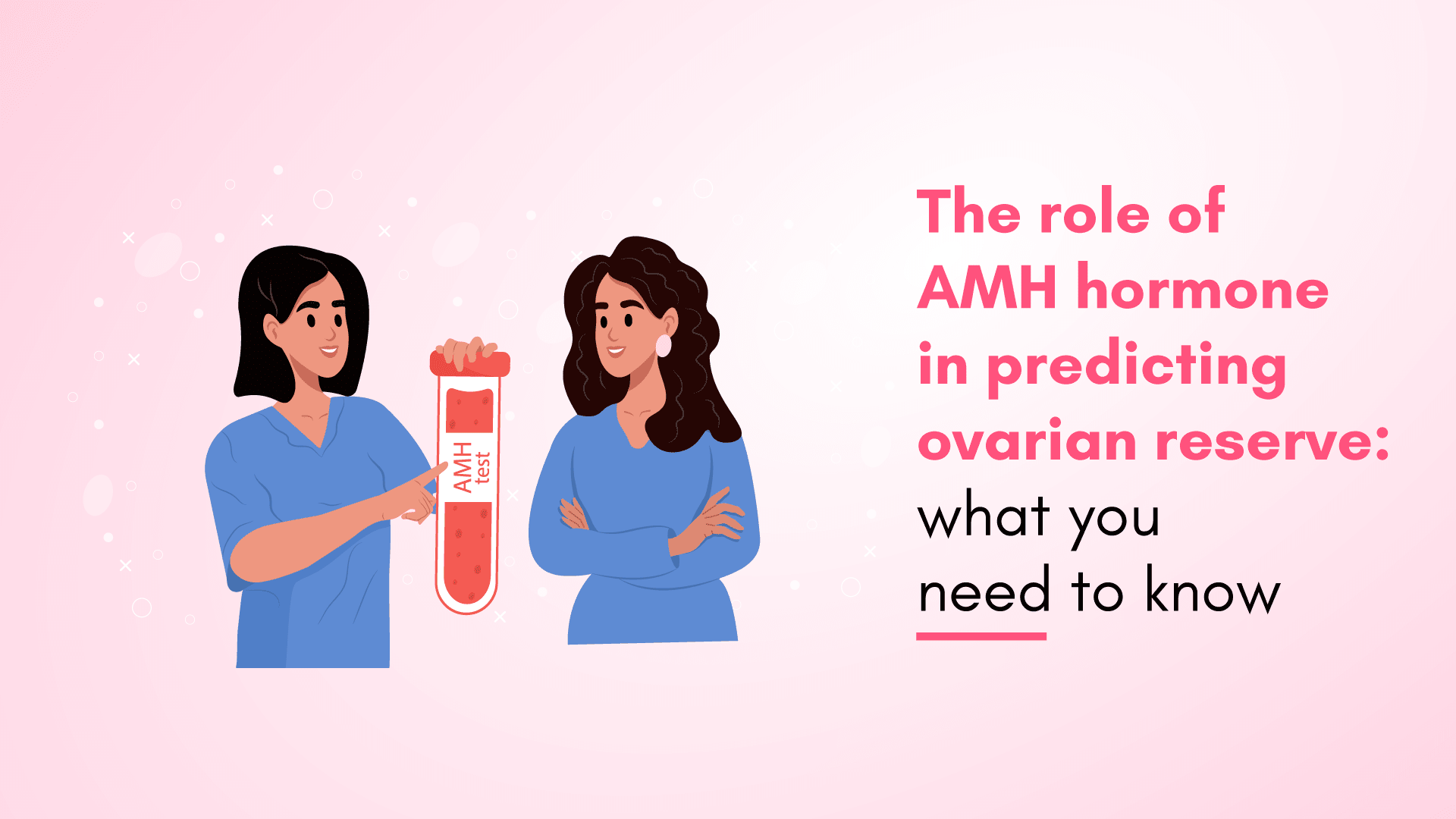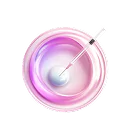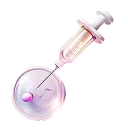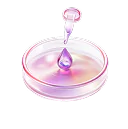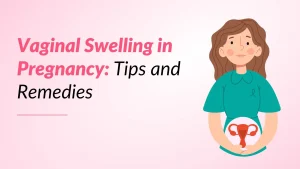Specialists diagnose severe medical conditions related to human reproductive health by measuring anti-Müllerian hormone (AMH) levels through AMH tests. These tests reflect the number of antral and pre-antral follicles in the ovaries. Understanding the AMH test and its significance can help patients navigate their reproductive health more effectively.
Also read: The Impact Of Age On Fertility: When To Consider Seeking Assistance
What is the Mullerian Hormone Test?
The anti-Müllerian hormone (AMH), is produced by granulosa cells in ovarian follicles, with the highest production during the pre-antral and small antral stages (less than 4mm in diameter). Both men and women produce AMH, but specialists primarily use the anti-Müllerian hormone (AMH) test for women to assess reproductive health.
Related Read: What Are Follicles and Why Are They Important for Fertility?
What is an Ovarian Reserve?
Ovarian reserve refers to the number of healthy and immature eggs in a woman’s ovaries. This reserve decreases with age, affecting fertility and lowers pregnancy chances. Various factors can reduce ovarian reserves, including poor lifestyle and diet, anticancer treatments, surgery near the pelvic area, and genetic conditions.
What is a Normal AMH Level?
A normal AMH (anti-Müllerian hormone) level varies from woman to woman and depends on the age. The normal AMH levels peak around adolescence and at 25 and start declining naturally afterward. AMH levels are measured in nanograms per milliliter (ng/mL), and the major ranges of AMH levels are-
- High AMH Levels- Patients with severe medical conditions, like polycystic ovary syndrome (PCOS), experience higher AMH levels, which are more than 4.0ng/mL.
- Normal AMH Levels: A good number of remaining eggs in the ovaries indicates a healthy ovarian reserve. The AMH levels range 1.2 – 4 ng/mL.
- Low AMH Levels: 0.5- 1.2ng/mL range of AMH level requires further evaluation for fertility planning.
- Very Low AMH Levels: Below AMH level of 0.5 ng/mL indicates diminished capacity for egg production and low ovarian reserve.
Also Read: All You Need to Know About Ovarian Cysts
Factors Affecting AMH Levels
Multiple factors impact the mullerian hormone besides genetic and environmental factors. It becomes important for couples to understand these factors that affect serum AMH levels-
- Polycystic ovary syndrome: This is the major reason for higher anti-Müllerian hormone levels, as it increases the number of small antral follicles.
- History of ovarian surgery: Surgeries like ovarian cystectomy are another major factor that reduces AMH levels and ovarian reserve as they affect ovarian tissues and the blood supply to the ovaries.
- Chemotherapy: It reduces the number of viable eggs, leading to lower anti-Müllerian hormones. Therefore, treatment for low AMH is required.
- Oral contraception: It suppresses ovarian function, causing lower anti-Müllerian hormone.
- Obesity: Adults with higher Body Mass Index experience lower AMH levels due to hormonal imbalances.
- BRCA mutations: BRCA 1 & BRCA 2 mutants have reduced ovarian reserve, adversely impacting women’s AMH levels & fertility.
Also Read: What is Ovarian Stimulation? Its Sign and Symptoms
Role of AMH in Ovarian Function and Follicle Development
AMH (anti-Müllerian hormone) levels are vital in regulating ovarian function and follicle development. Key points include:
Follicular Development Regulation
AMH regulates the number of growing follicles and their selection for ovulation. However, it also acts as a negative regulator, inhibiting the excessive recruitment of primordial follicles. Thus, it leads to a controlled and gradual development of follicles.
Marker of Ovarian Reserve
Women have a finite number of eggs, and the AMH level correlates with the functional ovarian reserve. For instance, in egg inventory, AMH levels showcase the number of follicles that grow actively. In addition, AMH levels provide an anticipation of the remaining pool of eggs. Lower AMH levels indicate fewer follicles and potentially fewer eggs, while higher levels suggest the opposite.
Age-Related Decline Indicator
The declining AMH (anti-mullerian hormone) indicates reducing the ovarian level and eggs over time. AMH does not predict fertility but it tells us that woman biological clock is ticking and need to be pregnant early. Lastly, health conditions also impact the higher and lower AMH treatment.
Assisted Reproductive Technology (ART) Planning
AMH levels are crucial in planning Assisted Reproductive Technology (ART) treatments, including in-virto fertilization. The AMH level for IVF helps professionals gain insights into how a woman’s ovaries respond to fertility medications that stimulate egg production. Additionally, fertility treatment for high AMH levels includes a more gentle approach to avoid overstimulation compared to fertility treatment for IVF with low AMH levels.
Personalized Treatment Guidance
Specialists use AMH test results to determine if ovulation induction is a suitable treatment option for women with Polycystic Ovary Syndrome (PCOS). Medical experts personalize treatment options based on AMH levels, considering the patient’s ovarian reserve.
Complementary Marker with Other Tests
Medical experts prefer AMH levels alongside other hormonal tests, including FSH (Follicle-Stimulating Hormone), to gain detailed insights into a patient’s hormonal conditions. For instance, high FSH levels with low AMH levels define a lower ovarian reserve.
Informing Reproductive Decision-Making
Lastly, be it fertility treatment for high or low AMH levels, the treatment process provides couples with thorough insight, enabling them to make informed decisions. They can plan their families, for instance, knowing their ovarian reserve and accordingly exploring the best treatment plan.
Also Read: Fertility Challenges In PCOS: Strategies For Management And Treatment
AMH Testing: How it Works
Medical experts conduct anti-mullerian hormone blood tests to examine and analyze women’s ovarian reserve. The test helps identify fertility potential in women and the best treatment options. Specialists collect the blood sample and analyze it using laboratory tests to get the concentration of AMH. High, normal, low, and below-low AMH fertility levels require specific treatment and approach accordingly. Lastly, with these reports, experts interpret the results to proceed with further treatment steps.
Related Read: Tips for Improving Egg Quality in Female Infertility Treatment
Conclusion
It is important to understand the basics of anti-mullerian hormones for couples to have a healthy perspective on their reproductive and fertility planning. By consulting with medical experts or specialized centers like Ferty9 Fertility Center, couples can restore their dream of becoming parents. The center offers personalized fertility treatment options, leveraging AMH levels to provide the best care and outcomes.








